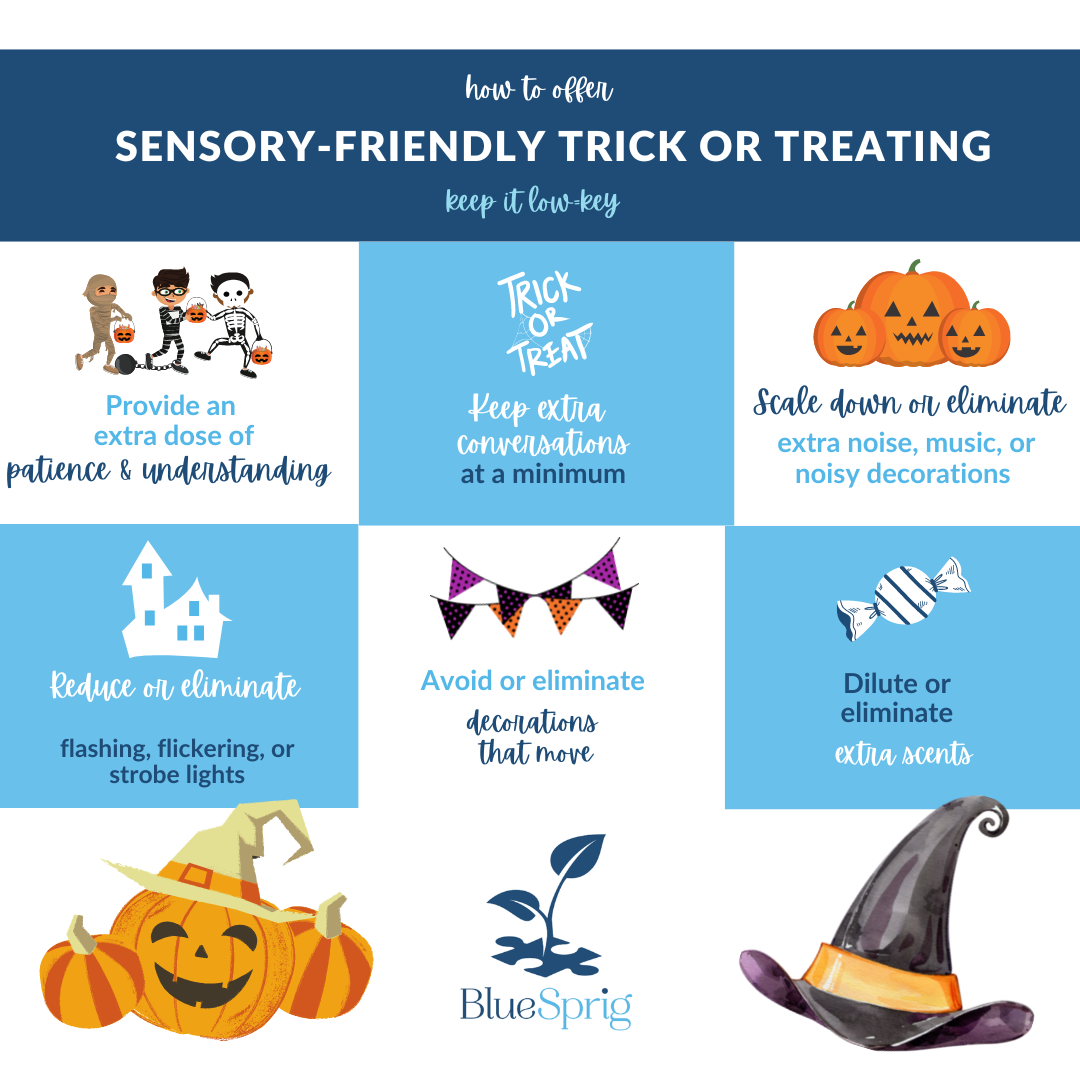For children with autism and other sensory differences, Halloween can be both cherished and challenging. Cherished for all of the reasons kids love Halloween (Costumes! Candy! Fun!) and challenging due to the extra sights, sounds and crowds that the holidays bring.
At BlueSprig Pediatrics, the leading national provider of ABA therapy for children with autism, we suggest a sensory-friendly alternative to traditional trick-or-treating by hosting a Sensory-Friendly Trick-or-Treat Hour. Here’s how it works:
Create your community:A few houses (or a whole block!) agree to offer a coordinated hour (or two!) of trick-or-treating for children minus the light-up decorations and overwhelming sounds.
Share the news:The community can promote the hour to families who may be looking for sensory-friendly solutions by posting on neighborhood boards like NextDoor, closed Facebook groups and others, noting which houses/areas will offer the Sensory-Friendly Trick-or-Treat Hour.

Reduce or eliminate lights, noise, or decorations: Consider taking your child or loved one trick or treating during the day to avoid Halloween lights. This will help prevent overstimulation from the flashing or flickering lights. While planning the sensory friendly trick or treating with your community, ask that they turn off any distracting noises or decorations that move during this planned time.
Provide an extra dose of patience and understanding: By preplanning this with your community, it will help those involved with a better understanding of how to provide a sensory friendly trick or treat. Remember to keep conversations at a minimum to avoid distractions and keep your loved one engaged!
In addition to hosting a sensory-friendly trick or treat hour, we have also listed out a few tips for the upcoming holiday to have you and your family prepared:
- Organizing a trunk or treat may be a great way to include folks from different streets/neighborhoods and is often a very safe way for kids to participate in the trick-or-treat tradition.
- Attending or Hosting a trunk or treat on a day or night other than Halloween may be a great idea to miss some of the over-stimulating elements that Halloween can bring.
- Let your child choose a costume they feel comfortable in. Consider Halloween-themed PJs and/or a Halloween shirt if your child isn’t interested in a costume.
- Practice trick-or-treating at home or with a trusted friend or family member to help your child become familiar with the process.
- Bring along items that your child finds calming, such as a favorite toy, headphones, fidget toys, etc.
- Be prepared for the possibility that your child may become overwhelmed and need to leave early. Having an exit plan in place can help reduce stress.
- Remember that every child with autism is unique, so it’s important to tailor these tips to your child’s specific needs and preferences. The goal is to create an enjoyable and comfortable Halloween experience for everyone involved!
As Halloween approaches, preparation can help parents and children deal with changes in routine, sensory sensitivities, and unusual social interactions. We hope you and your family have a happy Halloween! Tag us on social at @bluesprigautism to show how you and your family are celebrating Halloween this year!